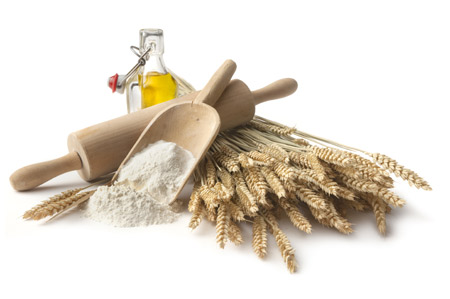 (Agrimoney) – Grain prices fell on Thursday, ahead of Friday’s key US data release, as markets braced for volatility.
(Agrimoney) – Grain prices fell on Thursday, ahead of Friday’s key US data release, as markets braced for volatility.
The US Department of Agriculture’s October world agriculture supply and demand estimates (Wasde) will shed light on the shape of global markets, as well as giving the government’s insight into the state of the US harvest.
The October estimates have a reputation of sparking sharp price adjustments.
“Look for volatile trade tomorrow,” warned Richard Feltes of Chicago-based broker RJ O’Brien.
“The market is on hold ahead of one of the more important reports of the year,” agreed US Commodities.
“The focus will shift to demand after the report,” Iowa-based US Commodities added. “The South America planting and weather will begin to climb in importance.”
‘No fireworks’
And if attention is set to turn to demand, the pace of US exports may be key.
US data for last week showed soybean exports sales at 1,284,600 tonnes, above the top end of expectations. But soybean sales are still well behind the pace of last year.
Corn export sales were 519,700 tonnes, below expectations. Wheatexport sales were reported at 288,200 tonnes, in line with expectations.
And Joe Lardy of CHS Hedging noted that sorghum exports have been weak so far in 2015-16.
“Cumulative net sales through five weeks last year was 2.67m tonnes versus this year’s total of 619,000 tonnes,” he noted.
“Export sales this morning provided no fireworks and that has been the problem,” said Darrell Holaday, of Country Future.
“The market needs an export spark and it did not get it.”
Favourable weather
Even with all eyes on the Wasde, the US harvest keeps a background pressure on grain prices, especially with ideas of dry weather for now to speed fieldwork.
Mr Feltes noted a “big harvest weekend ahead”.
“Weather forecasts are very favourable to rapid advancement of harvest,” said CHS Hedging.
Furthermore, “no cold weather threats exist,” meaning no frost risk on the horizon for crops still in the field.
November soybeans closed down 1.1%, at $8.81 ¼ a bushel.
Weak Chinese demand
And there was more bad news on demand for corn, as Reuters reported that a government source in Ukraine saw corn exports from that country to China likely to be below market expectations, in what is seen as a reflection of weakened demand.
China, which has built up huge stocks of domestically-produced corn, albeit at high price levels, is reforming its corn subsidy regime in an effort to boost domestic demand, a change which is undermining domestic prices.
Ukraine, which has a supply contract with China, was expected to ship around 2m tonnes this year, but a senior government official is reported to have pegged expectations at just 150,000 tonnes.
December corn closed down 1.0%, at 3.91 ¼ a bushel.
Rally stalls
There was support from a large wheat tender from Saudi Arabia, which is looking to buy 715,000 tonnes of hard wheat by Friday.
But a rally in wheat stalled, as traders took profits ahead of tomorrow’s likely volatility.
Chicago wheat closed down 1.2%, at $5.11 ½ a bushel.
Cane crushing up
Sugar edged up, despite some data from Brazilian cane industry association Unica, which was initially viewed as bearish.
Sugar production in the key Centre South region hit 2.39m tonnes in the second half of September, a jump of 46% year-on-year.
Production was 43% up from the first half of September, and some 10,000 tonnes more than the figure expected by investors polled by analysis group Platts Kingsman.
Production was boosted by a higher cane harvest, as the rains that had delayed cane cutting in the region eased.
Currency support
But the real found some strength again, rising 1.8% against the dollar.
A strong real is bullish for sugar, as it discourages selling in Brazil, the world’s biggest exporter.
March raw sugar fell immediately after the Unica release, but recovered late in the day to finish up 0.2%, at 14.01 cents a pound, just shy of a 7 month high.
Dry weather fuels rally
Coffee continued to rally, as key growing regions, including Minas Gerais in Brazil, face ongoing dryness.
“Production in just about all major areas has been affected by dry weather,” said Jack Scoville of Price Futures.
“It has been hot and dry in Brazil and dry in northern South America and Central America.”
December arabica coffee settled up 1.9%, at 128.45 cents a pound.
November robusta coffee settled up 1.5%, at $1,582 a tonne.
Grinding demand
Cocoa futures extended their slump, having fallen for 10 of the past 11 sessions.
Markets are poised for more information on cocoa grinding, a proxy for demand.
“The next round of quarterly grind data is coming starting next week and the trade generally expects weak demand once again,” said Mr Scoville.
New York December cocoa settled down 0.6%, at $3,060 a tonne, while London December cocoa closed down 0.7%, at £2,093 a tonne.
Mexican purchase
And disappointing export sales weighed on cotton.
The US reported sales of 206,900 bales for the 2015-16 crop year, a rise of 76% from the previous week.
But more than half of this was attributed to a large purchase from Mexico, which is not expected to be repeated.
December cotton in New York settled down 0.5%, at 61.72 cents a pound.




